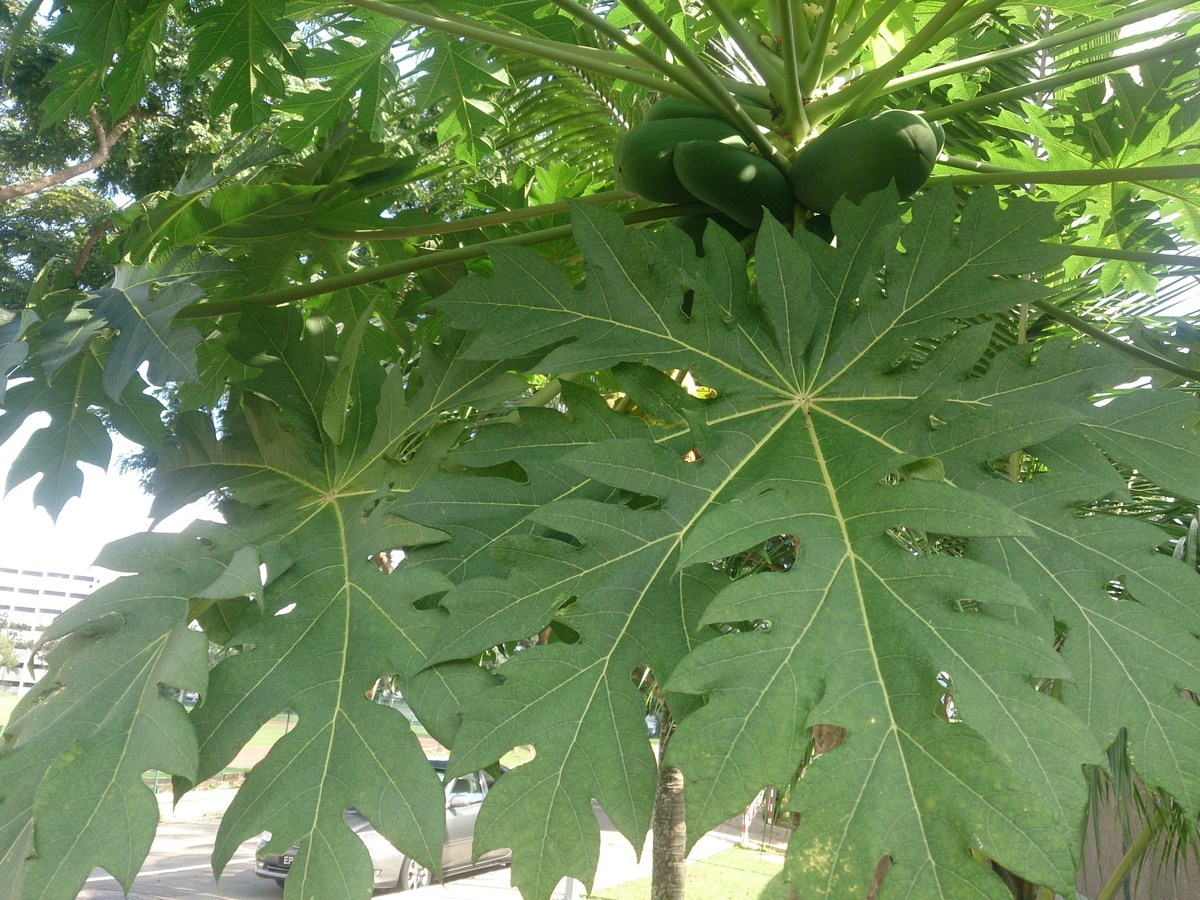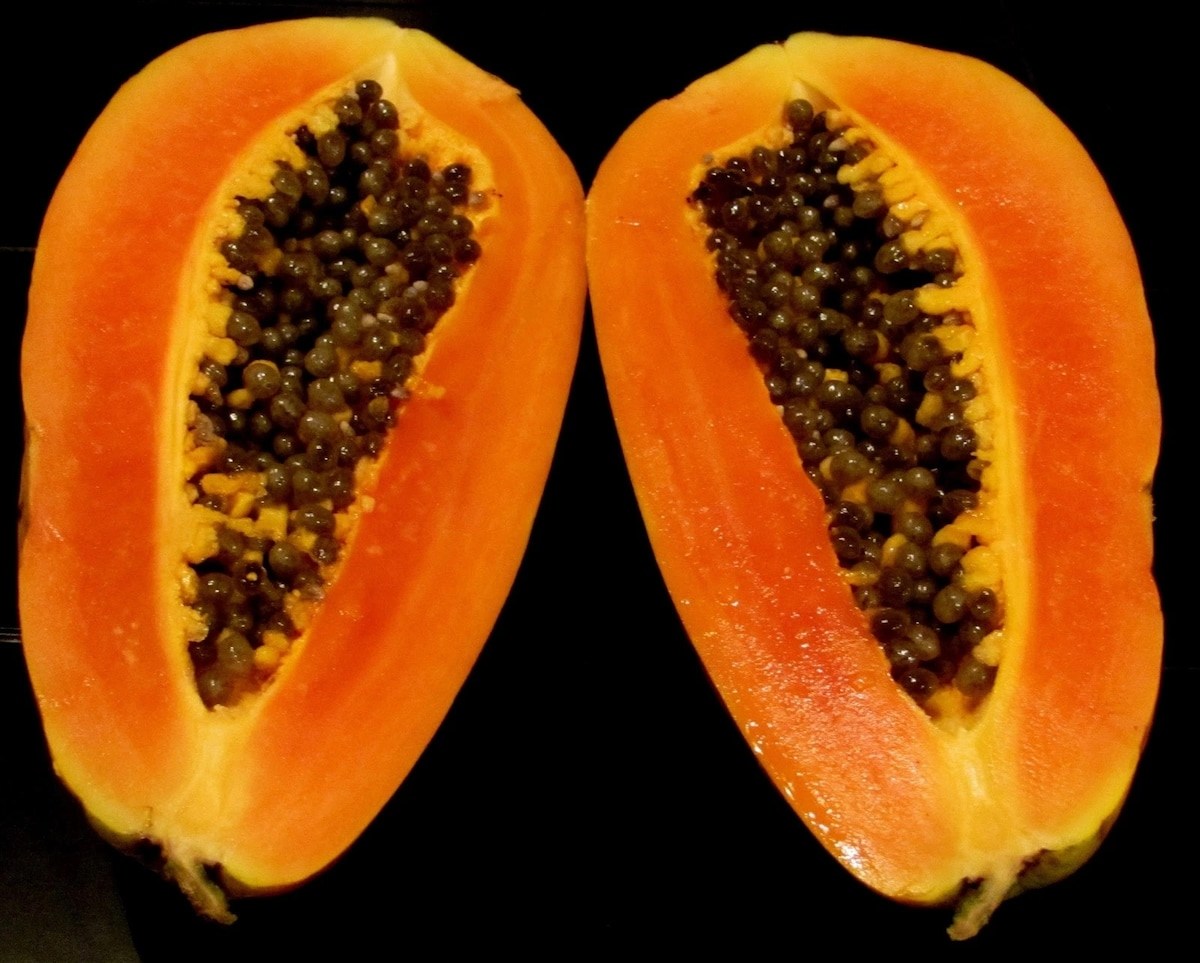What are the benefits of pawpaw leaves – Embarking on a journey to uncover the extraordinary benefits of pawpaw leaves, we delve into a realm of natural remedies, where science and tradition converge to reveal a treasure trove of healing properties. From combating inflammation and infections to promoting wound healing and addressing chronic ailments, pawpaw leaves offer a remarkable array of therapeutic applications.
With their rich nutritional profile and potent bioactive compounds, pawpaw leaves have garnered significant attention in both traditional medicine and modern scientific research. Let us unravel the secrets of this remarkable plant, exploring its myriad health benefits and the evidence that supports its medicinal uses.
Nutritional Value of Pawpaw Leaves
Pawpaw leaves are an excellent source of essential nutrients, including vitamins, minerals, and antioxidants. The following table provides a comprehensive overview of the nutritional value of pawpaw leaves:| Nutrient | Amount per 100 grams ||—|—|| Vitamin A | 10,800 IU || Vitamin C | 150 mg || Vitamin E | 10 mg || Vitamin K | 100 µg || Calcium | 200 mg || Iron | 2 mg || Magnesium | 20 mg || Potassium | 250 mg || Zinc | 1 mg || Beta-carotene | 10,000 IU || Lutein | 1,000 µg || Zeaxanthin | 500 µg |These nutrients play a vital role in maintaining overall health and well-being.
Vitamin A is essential for vision, immune function, and skin health. Vitamin C is a powerful antioxidant that protects cells from damage and supports immune function. Vitamin E is another antioxidant that protects cells from damage and helps to maintain healthy skin and hair.
Chilli leaves, despite their pungent nature, contain valuable nutrients. Evidence suggests that they may have antioxidant and anti-inflammatory properties, contributing to overall well-being. Similarly, coriander leaves offer a wealth of health benefits. Studies have found that consuming coriander leaves daily can aid in digestion, reduce cholesterol levels, and provide essential vitamins and minerals.
Vitamin K is essential for blood clotting and bone health. Calcium is essential for strong bones and teeth, as well as for nerve and muscle function. Iron is essential for red blood cell production and oxygen transport. Magnesium is essential for muscle function, nerve function, and blood sugar control.
Potassium is essential for fluid balance, blood pressure regulation, and muscle function. Zinc is essential for immune function, wound healing, and taste perception.The antioxidants in pawpaw leaves, such as beta-carotene, lutein, and zeaxanthin, help to protect cells from damage caused by free radicals.
Free radicals are unstable molecules that can damage cells and contribute to the development of chronic diseases such as cancer and heart disease.Pawpaw leaves are a nutrient-rich food that can help to prevent or treat nutritional deficiencies. They are a good source of vitamins A, C, E, and K, as well as minerals such as calcium, iron, magnesium, potassium, and zinc.
The antioxidants in pawpaw leaves help to protect cells from damage and may reduce the risk of chronic diseases.
Anti-inflammatory Properties: What Are The Benefits Of Pawpaw Leaves

Pawpaw leaves contain several anti-inflammatory compounds, including papain, chymopapain, and bromelain. These compounds work by inhibiting the production of inflammatory cytokines, which are proteins that promote inflammation.Inflammation is a natural response to injury or infection, but chronic inflammation can contribute to the development of several diseases, including arthritis, asthma, and inflammatory bowel disease.
The anti-inflammatory properties of pawpaw leaves may help to reduce inflammation and improve symptoms in these conditions.For example, a study published in the journal “Phytotherapy Research” found that pawpaw leaf extract significantly reduced inflammation in rats with arthritis. Another study, published in the journal “Inflammation,” found that pawpaw leaf extract inhibited the production of inflammatory cytokines in human cells.These studies suggest that pawpaw leaves may be a potential natural treatment for inflammatory conditions.
In addition to the health benefits of mint leaves juice , mango leaves also offer unique properties. For individuals with diabetes, mango leaves possess anti-diabetic effects that can aid in managing blood sugar levels. Similarly, chilli leaves contain capsaicin, a compound known for its analgesic and anti-inflammatory properties.
Incorporating coriander leaves into one’s daily diet provides numerous benefits, including improved digestion and reduced cholesterol levels.
However, more research is needed to confirm the effectiveness and safety of pawpaw leaves for this purpose.
Antibacterial and Antimicrobial Properties
Pawpaw leaves have been shown to have antibacterial and antimicrobial properties against a wide range of bacteria and viruses. These properties are due to the presence of several compounds in pawpaw leaves, including papain, chymopapain, and flavonoids.Papain and chymopapain are enzymes that can break down the cell walls of bacteria.
Flavonoids are antioxidants that can inhibit the growth of bacteria and viruses.Studies have shown that pawpaw leaf extract is effective against several bacteria, including Staphylococcus aureus, Escherichia coli, and Pseudomonas aeruginosa. Pawpaw leaf extract has also been shown to be effective against several viruses, including herpes simplex virus and influenza virus.These studies suggest that pawpaw leaves may be a potential natural treatment for bacterial and viral infections.
In addition to its refreshing aroma and flavor, mint leaves possess significant health benefits. Studies have shown that mint leaves juice can aid in digestion, reduce inflammation, and alleviate respiratory issues. Mango leaves, too, offer therapeutic properties. Research indicates that they may regulate blood sugar levels and improve insulin sensitivity, making them potentially beneficial for managing diabetes.
However, more research is needed to confirm the effectiveness and safety of pawpaw leaves for this purpose.
Antiparasitic Properties
Pawpaw leaves have been used traditionally to treat parasitic infections. Studies have shown that pawpaw leaf extract is effective against several parasites, including malaria parasites, intestinal worms, and skin parasites.The antiparasitic properties of pawpaw leaves are due to the presence of several compounds in pawpaw leaves, including papain, chymopapain, and tannins.
Papain and chymopapain are enzymes that can break down the cell walls of parasites. Tannins are compounds that can inhibit the growth and reproduction of parasites.Studies have shown that pawpaw leaf extract is effective against malaria parasites in vitro and in vivo.
Pawpaw leaf extract has also been shown to be effective against intestinal worms in humans and animals.These studies suggest that pawpaw leaves may be a potential natural treatment for parasitic infections. However, more research is needed to confirm the effectiveness and safety of pawpaw leaves for this purpose.
Wound Healing Properties

Pawpaw leaves have been used traditionally to treat wounds. Studies have shown that pawpaw leaf extract promotes wound healing by several mechanisms.First, pawpaw leaf extract contains several compounds that can stimulate the growth of new tissue. These compounds include papain, chymopapain, and flavonoids.
Papain and chymopapain are enzymes that can break down damaged tissue and promote the growth of new tissue. Flavonoids are antioxidants that can protect cells from damage and promote the healing process.Second, pawpaw leaf extract contains several compounds that can reduce inflammation.
Inflammation is a natural response to injury, but chronic inflammation can delay wound healing. The anti-inflammatory compounds in pawpaw leaf extract can help to reduce inflammation and promote wound healing.Third, pawpaw leaf extract contains several compounds that can inhibit the growth of bacteria.
Bacteria can infect wounds and delay healing. The antibacterial compounds in pawpaw leaf extract can help to prevent infection and promote wound healing.Studies have shown that pawpaw leaf extract is effective in treating a variety of wounds, including burns, cuts, and abrasions.
Pawpaw leaf extract has also been shown to be effective in treating diabetic ulcers and pressure sores.These studies suggest that pawpaw leaves may be a potential natural treatment for wounds. However, more research is needed to confirm the effectiveness and safety of pawpaw leaves for this purpose.
Other Health Benefits
Pawpaw leaves have been used traditionally to treat a variety of other health conditions, including malaria, diabetes, and cancer. However, there is limited scientific evidence to support these claims.Some studies have shown that pawpaw leaf extract may have anti-malarial properties.
However, more research is needed to confirm the effectiveness and safety of pawpaw leaves for this purpose.Other studies have shown that pawpaw leaf extract may have anti-diabetic properties. However, more research is needed to confirm the effectiveness and safety of pawpaw leaves for this purpose.There is some evidence to suggest that pawpaw leaf extract may have anti-cancer properties.
However, more research is needed to confirm the effectiveness and safety of pawpaw leaves for this purpose.
Final Thoughts
As we conclude our exploration of pawpaw leaves’ health benefits, it is evident that this unassuming plant holds immense therapeutic potential. From its anti-inflammatory and antimicrobial properties to its wound healing and antiparasitic effects, pawpaw leaves offer a natural approach to addressing a wide range of health concerns.
While further research is warranted to fully elucidate the mechanisms of action and establish optimal dosages, the traditional uses and scientific evidence presented here provide a compelling foundation for incorporating pawpaw leaves into our health regimens. By embracing the wisdom of nature, we can harness the healing power of this remarkable plant and unlock its potential for improving our well-being.
Commonly Asked Questions
Are pawpaw leaves safe to consume?
Pawpaw leaves are generally considered safe for consumption in moderate amounts. However, individuals with certain medical conditions or allergies should consult a healthcare professional before using pawpaw leaves medicinally.
How can I incorporate pawpaw leaves into my diet?
Pawpaw leaves can be consumed in various forms, including teas, tinctures, capsules, and fresh or dried leaves added to salads or smoothies.
Are there any side effects associated with pawpaw leaves?
Excessive consumption of pawpaw leaves may cause digestive upset, nausea, or vomiting. Pregnant or breastfeeding women should avoid using pawpaw leaves without consulting a healthcare professional.

